The spread of the Corona Virus epidemic in the UK in March 2019, with the ensuing government enforced social distancing measures and restrictions on movement and association, resulted in the effective lockdown of many public places including educational establishments, council buildings and galleries. This led in turn to the cancellation of our planned end of year exhibition - which would have formed the basis of the submission for our Final Major Project module to complete the requirements of my BA Degree in Photography at Coleg Llandrillo in North Wales.I found it impossible to dispel my deep conviction that a physical print format would be the most appropriate way to present the particular body of work, a series of colour photograms made using the contents of my recycle bin. To resolve this dilemma I decided to build a personal gallery space as a 1 in 12 scale maquette in which to exhibit physical prints, as originally planned. The exhibition is called PLASTICITY and can be viewed on my portfolio website at http://www.derekcrawfordphotography.net or using the direct link to a You Tube Video at youtube.com/watch?v=g-rnFbcAeXg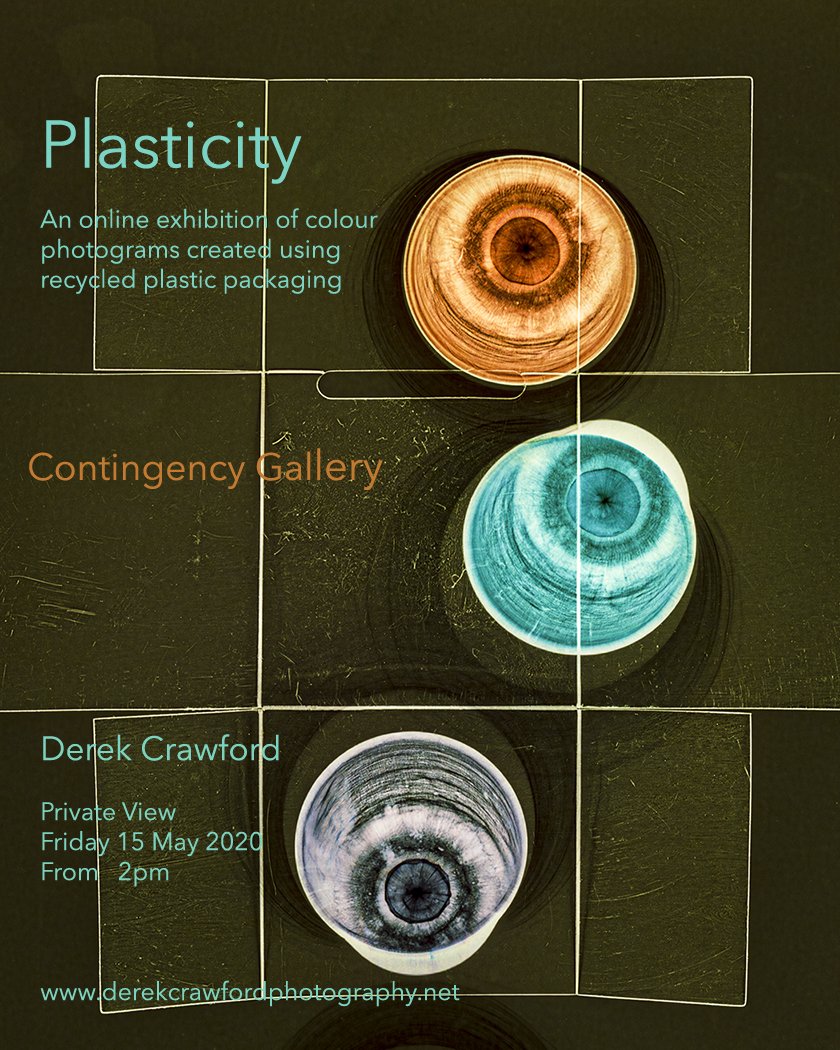
Hassan Hajjaj - Maison Européenne de la Photographie
The Maison Européenne de la Photographie is a permanent gallery in the Hotel Henault de Cantobre (built in 1706) in the Rue de Fourcy in central Paris. Owned by the city of Paris, it opened as a gallery devoted solely to photography in 1985 and the current director Simon Baker was appointed in 2018, having previously worked as Senior Curator (International Art - Photography) at Tate Modern in London. He has now initiated a programme aiming to cover a diverse range of contemporary photography. The main feature exhibition when I visited in November, was the work of London based photographer Hassan Hajjaj, who had emigrated there with his parents from Larache in Morocco, when he was aged thirteen.This was an extensive exhibition featuring some of his earlier black and white and hand coloured monochrome prints but much of the space was devoted to his large scale almost life size vividly colourful portraits of his friends and colleagues from a wide variety of artistic backgrounds. The other really striking feature drawing from his background was his imaginative use of highly stylised frames featuring tins of food, canned drinks, sauce bottles or bobbins of thread.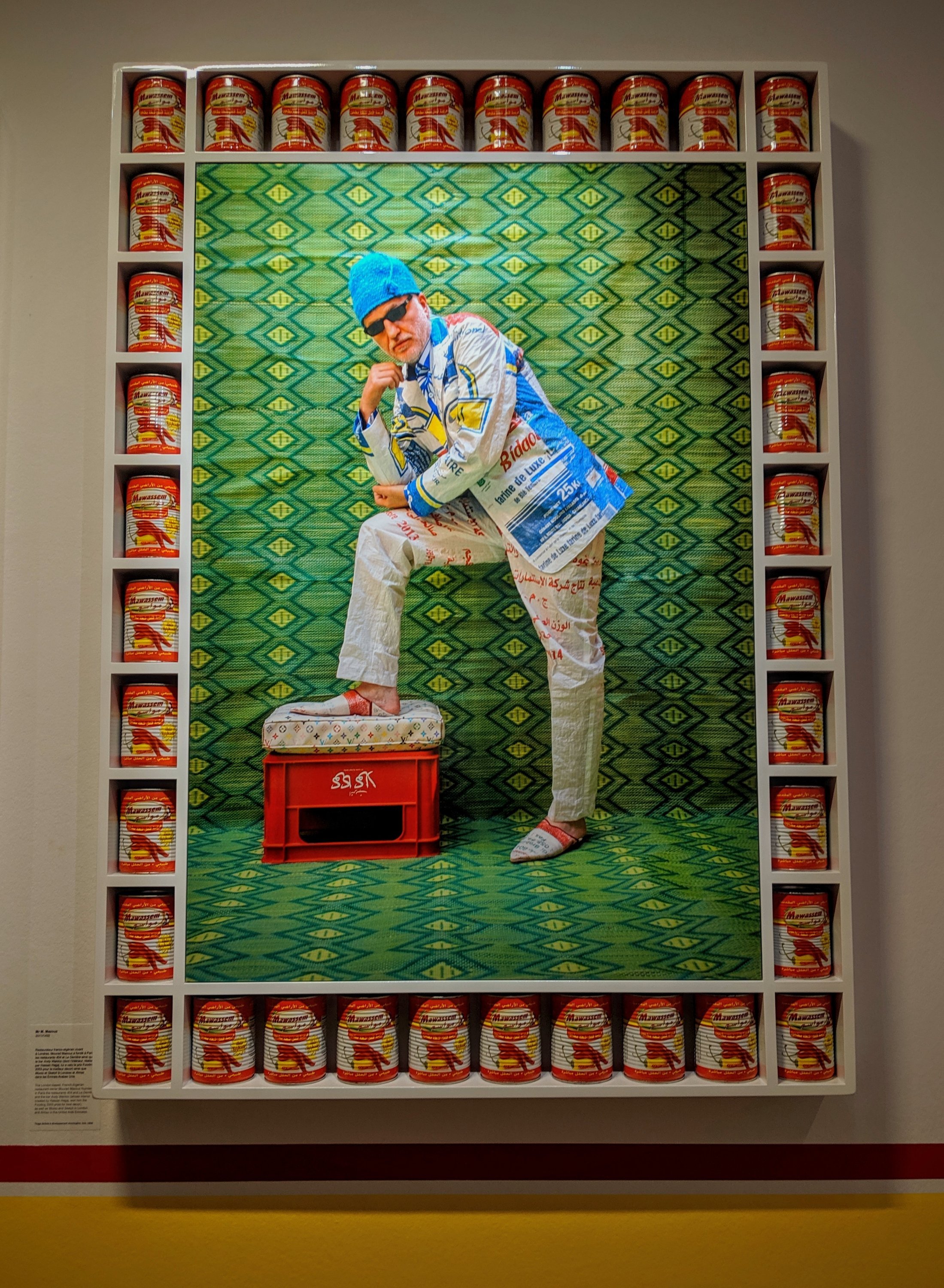
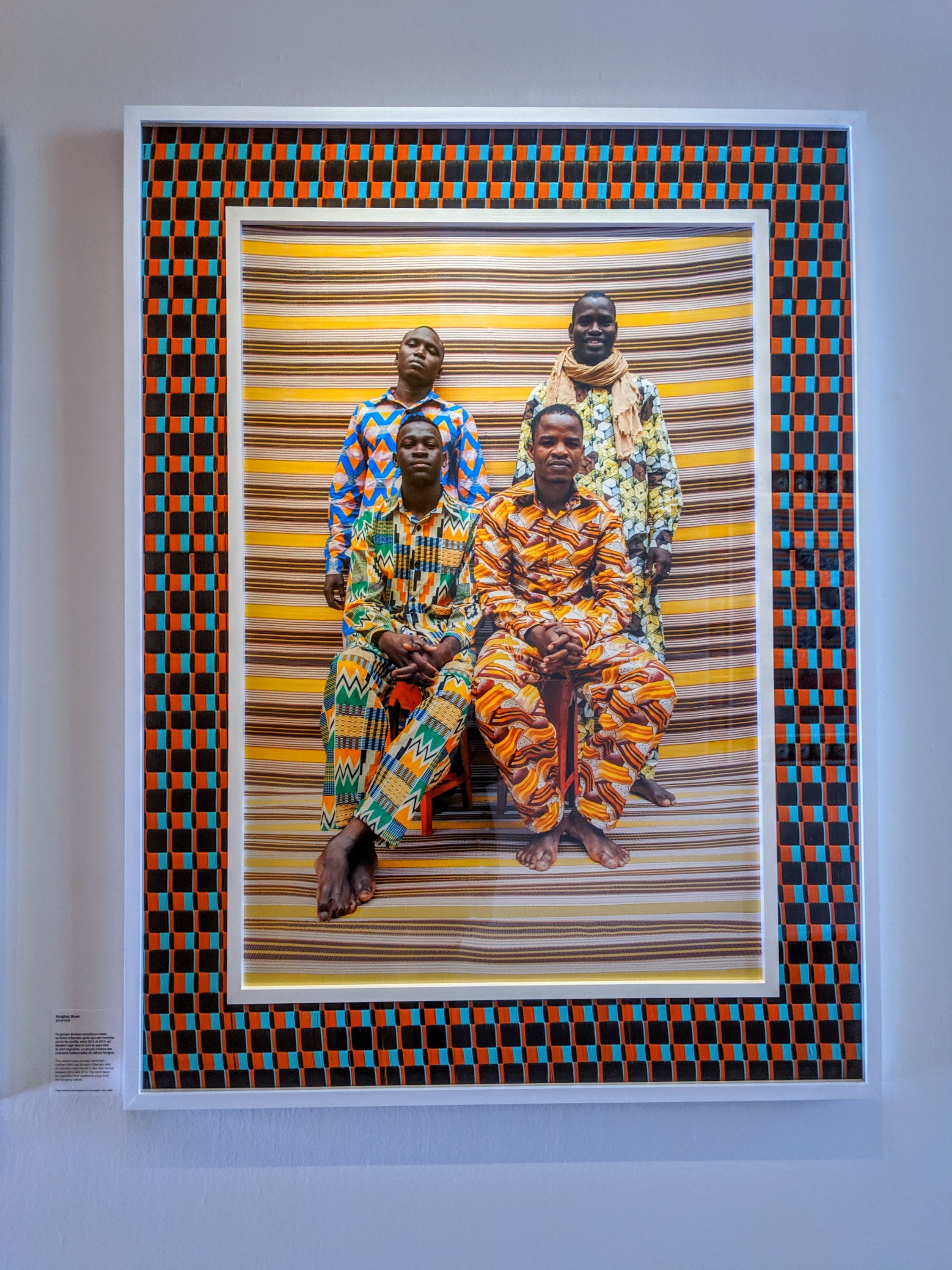 There is a strong thread of ironic humour running through his work but also a real sense of his pride in the communities he works in and his desire to see them represented fairly, in the positive light they deserve. There was a lot of excellent photography to see as running concurrently, the gallery was also showing some work by the female Moroccan photographers Zahrin Kahlo and Lamia Naji, with as a bonus a small selection of monochrome prints in a basement gallery by Malick Sidibé and Seydou Keita (both from Mali).www.mep-fr.orgwww.bjp-online.com/2019/10/hassan-hajjaj/
There is a strong thread of ironic humour running through his work but also a real sense of his pride in the communities he works in and his desire to see them represented fairly, in the positive light they deserve. There was a lot of excellent photography to see as running concurrently, the gallery was also showing some work by the female Moroccan photographers Zahrin Kahlo and Lamia Naji, with as a bonus a small selection of monochrome prints in a basement gallery by Malick Sidibé and Seydou Keita (both from Mali).www.mep-fr.orgwww.bjp-online.com/2019/10/hassan-hajjaj/
Butte de Montmartre, Paris.
The 'Basilique du Sacre Coeur de Montmartre' which dominates the skyline in the north of Paris is one of the most popular tourist attractions in the city and is undeniably impressive, especially when floodlit at night. While the Romano-Byzantine architectural features used in Paul Abadie's design suggest it could be much older, building started in 1875 and it was not completed until 1914 (though following the outbreak of the First World War, was not consecrated until 1919). The 'hill of the martyrs' was used as a site of worship by the Druids of ancient Gaul as well as the Romans and was documented as the site of the marytrdom of Saint Denis the first bishop of Paris in a history of the life of Saint Genevieve in 475AD. The last of several earlier churches had been destroyed a hundred years earlier following the French Revolution and the new basilica was commissioned following a 'vow of reparation' instigated by the Society of Saint Vincent de Paul, following the defeat of France in the Franco-Prussian war of 1870 with subsequent occupation by the German Army.For my trip to Paris Photo, the 'most affordable' hotel I could find within walking distance of the Gare du Nord, happened to be around the corner from where I made the photograph of Sacre Coeur above, in the Butte de Montmartre (the area around the bottom of the steps leading up to the Basilica). My first impression, that this was not one of the more well maintained parts of the city, was confirmed the following morning, when I opened the curtains of my room in the ironically named Hotel Bellevue.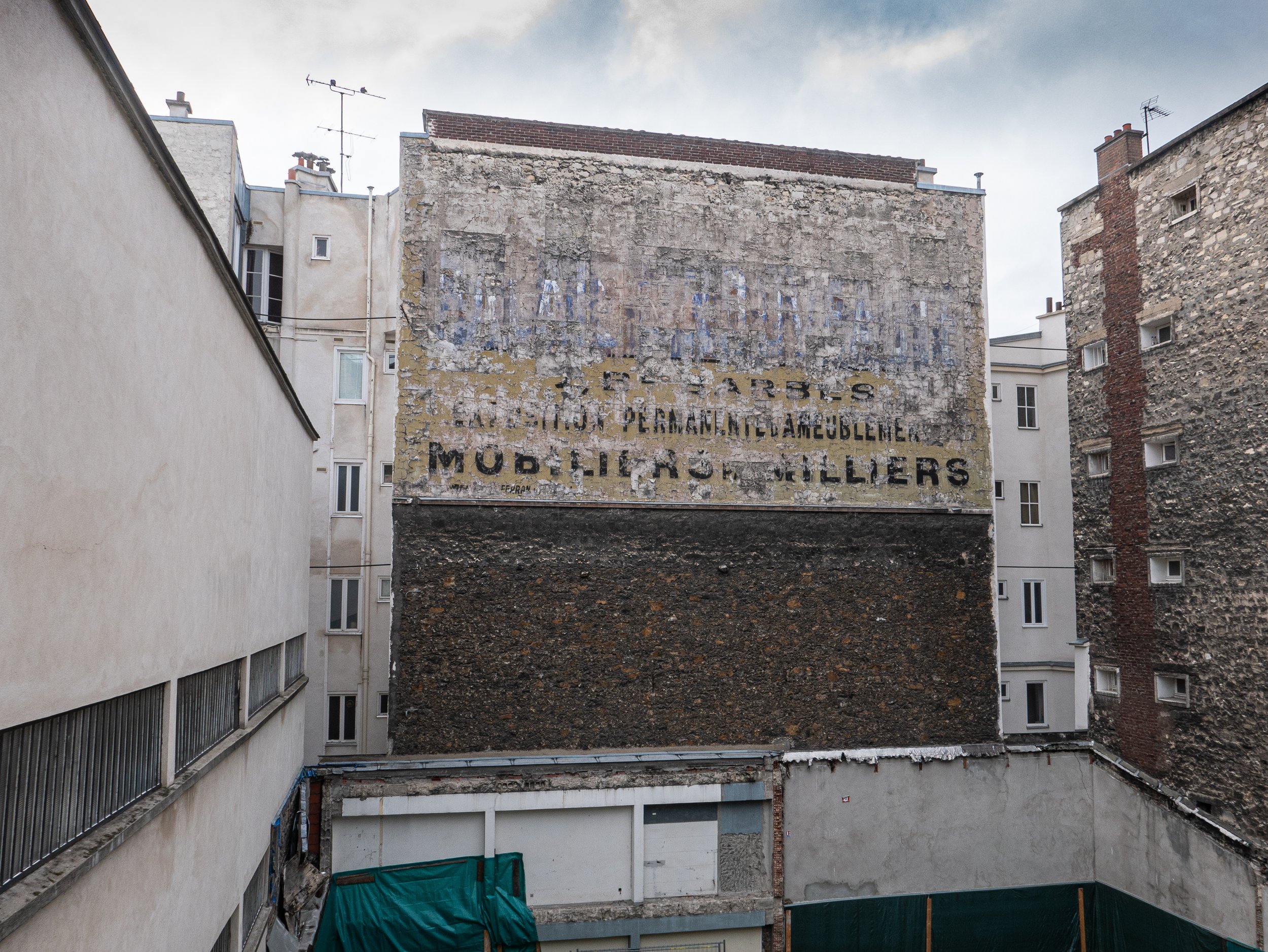 Unfortunately I did not have time to explore the more gentrified areas of Montmartre and did not get to the famous cemetery where several of the artists and poets who lived here are buried. There was however plenty to photograph in the narrow streets around the hotel, mainly cafes, restaurants, shops selling tatty tourist souvenirs and for some reason, all sorts of fabrics, most of which appeared to have been sourced from the middle east.
Unfortunately I did not have time to explore the more gentrified areas of Montmartre and did not get to the famous cemetery where several of the artists and poets who lived here are buried. There was however plenty to photograph in the narrow streets around the hotel, mainly cafes, restaurants, shops selling tatty tourist souvenirs and for some reason, all sorts of fabrics, most of which appeared to have been sourced from the middle east.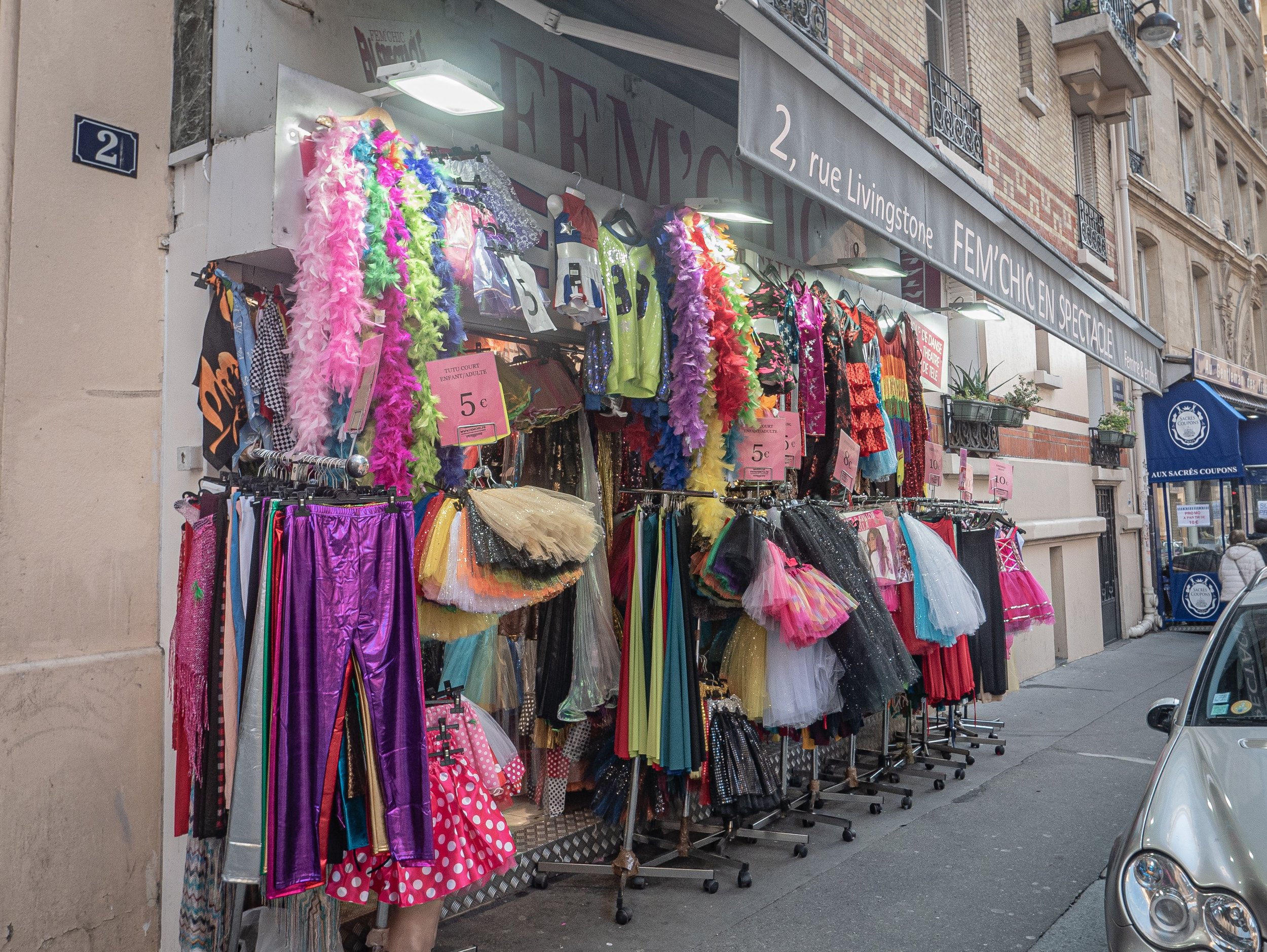
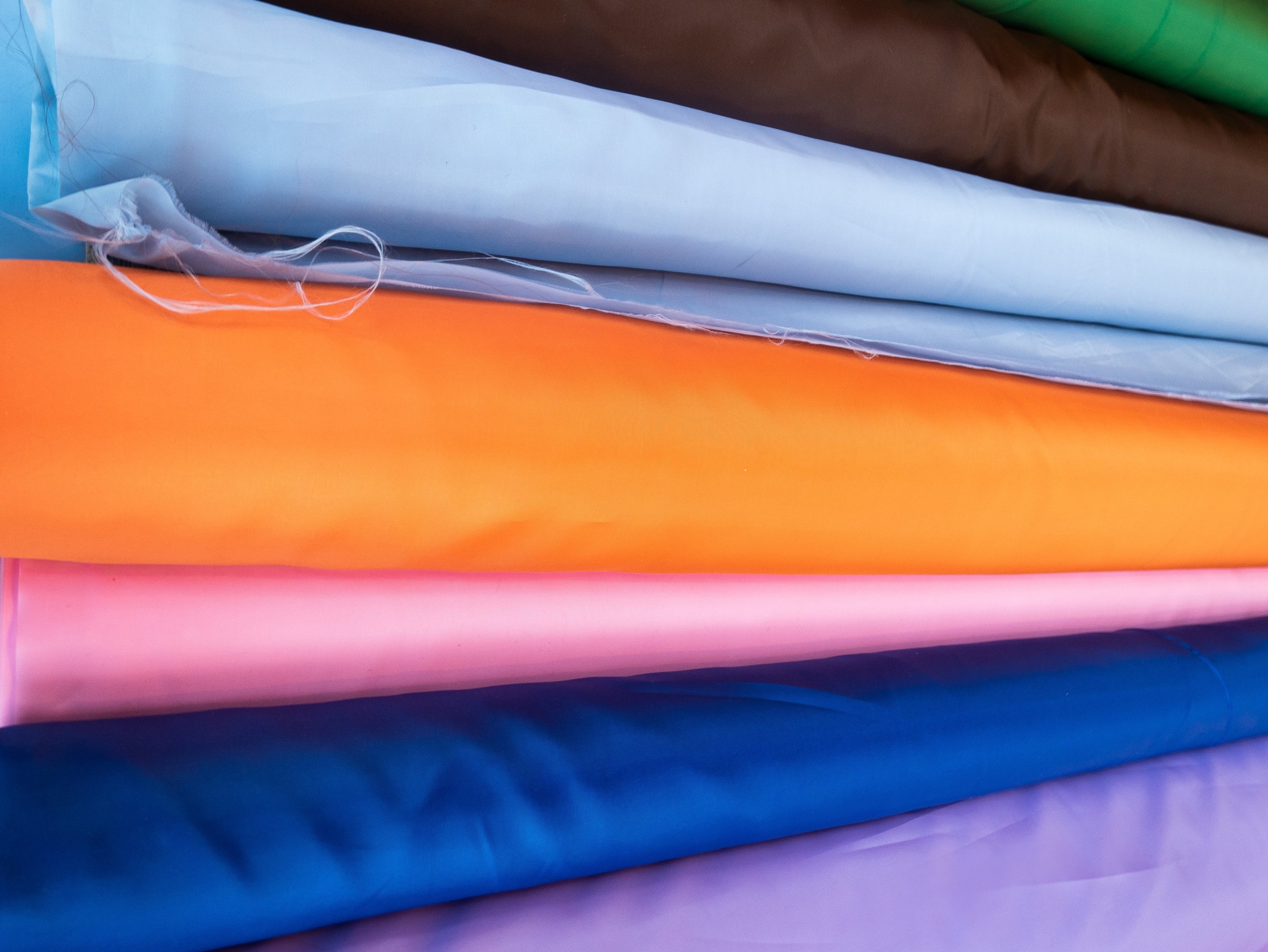
 The area appears to have been undergoing extensive change and the streets are starting in places to look quite shabby with a lot of graffiti - one of the few things that perhaps point to the area having an artistic heritage.
The area appears to have been undergoing extensive change and the streets are starting in places to look quite shabby with a lot of graffiti - one of the few things that perhaps point to the area having an artistic heritage.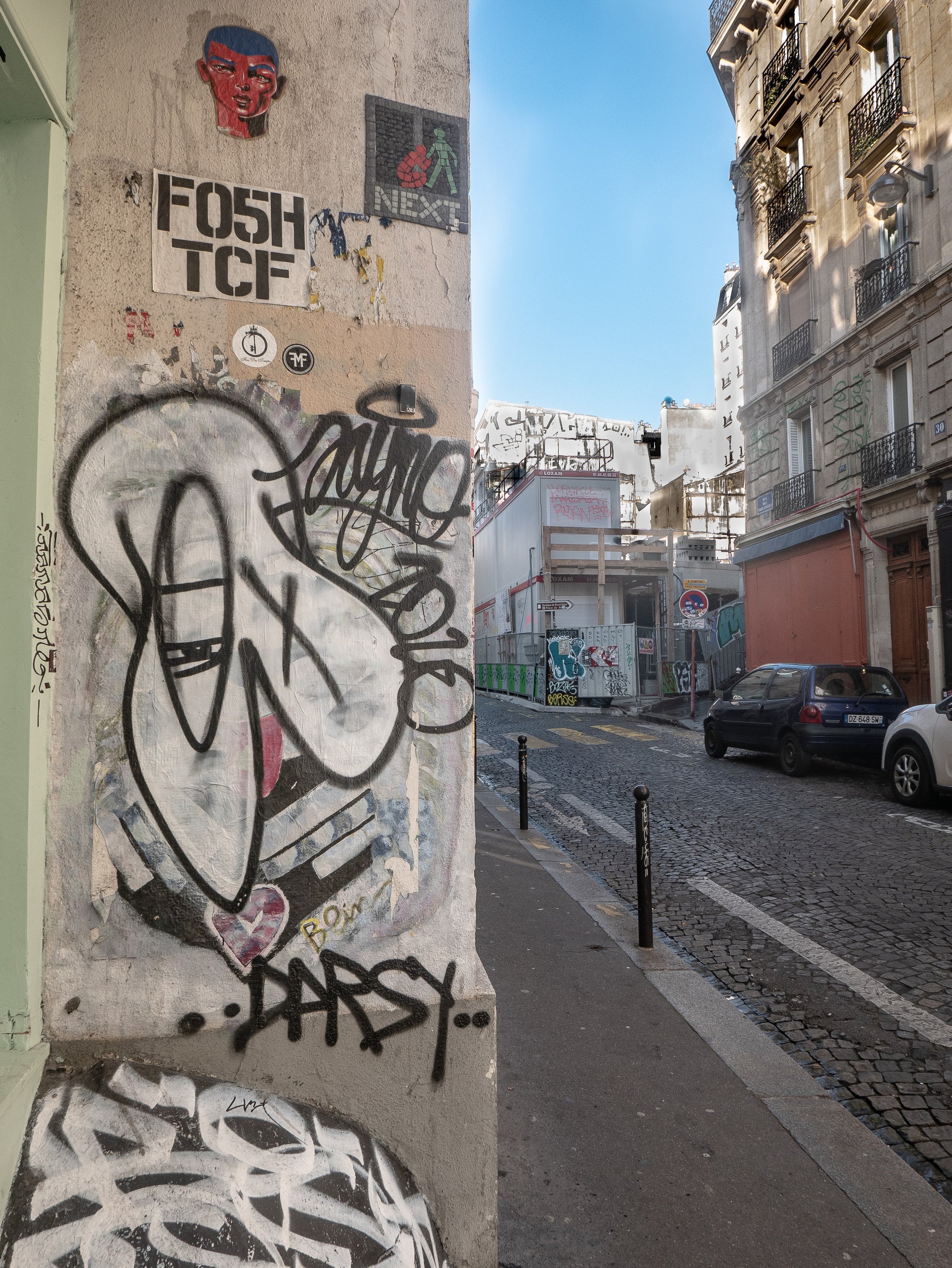
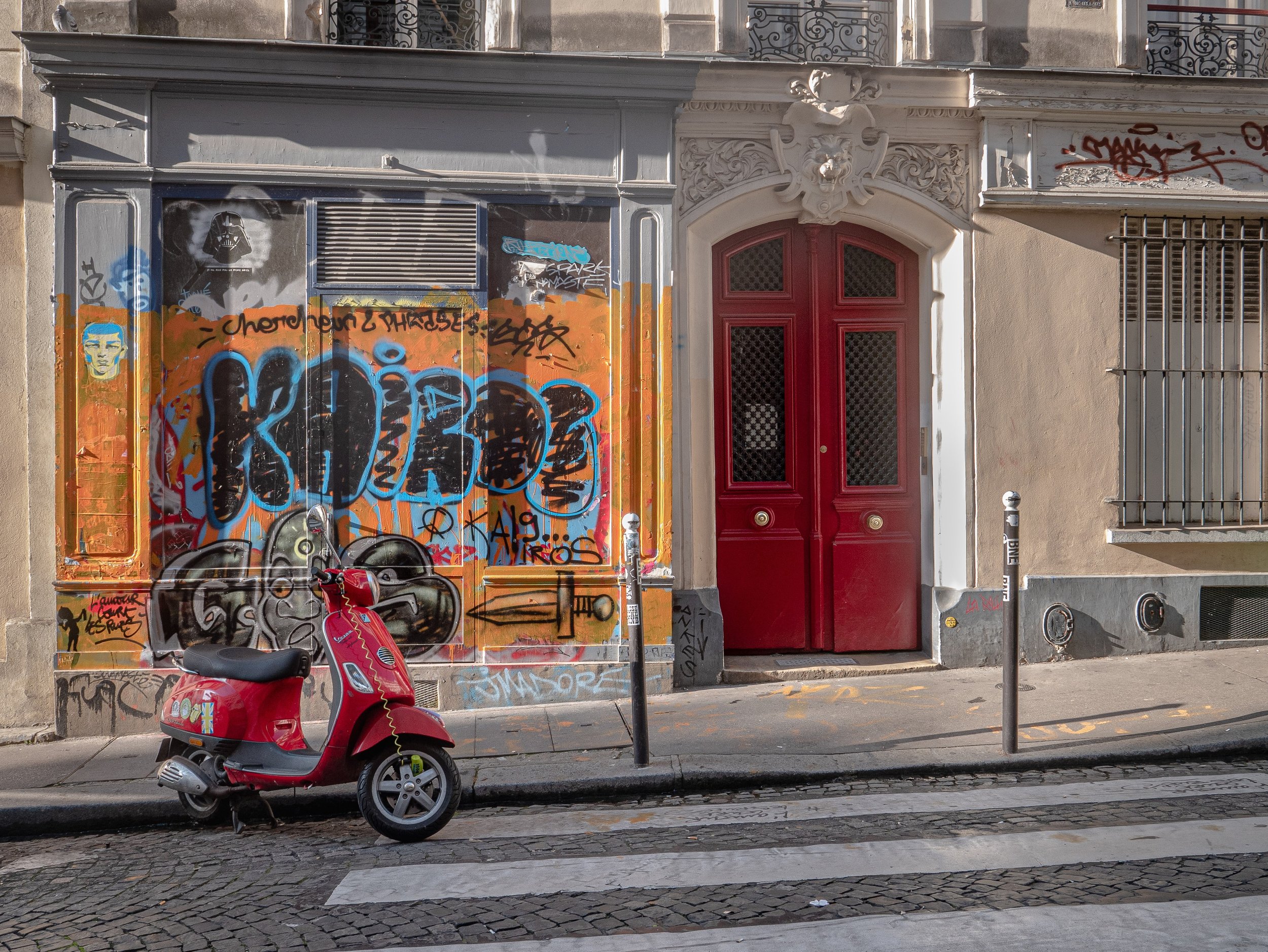 In the daytime the steps leading up to Sacre Coeur quickly get very crowded, negating any sense of reverence for a site created for the purpose of religious devotion. This is exacerbated by the number of unlicensed street vendors trying to make a living by selling any number of cheap shiny plastic trinkets, predominantly Eiffel Towers and religious statuettes. The wider terraces are also populated with acrobatic breakdancing buskers using portable amplifiers and beat-boxes, a potential magnet for pick-pockets.
In the daytime the steps leading up to Sacre Coeur quickly get very crowded, negating any sense of reverence for a site created for the purpose of religious devotion. This is exacerbated by the number of unlicensed street vendors trying to make a living by selling any number of cheap shiny plastic trinkets, predominantly Eiffel Towers and religious statuettes. The wider terraces are also populated with acrobatic breakdancing buskers using portable amplifiers and beat-boxes, a potential magnet for pick-pockets.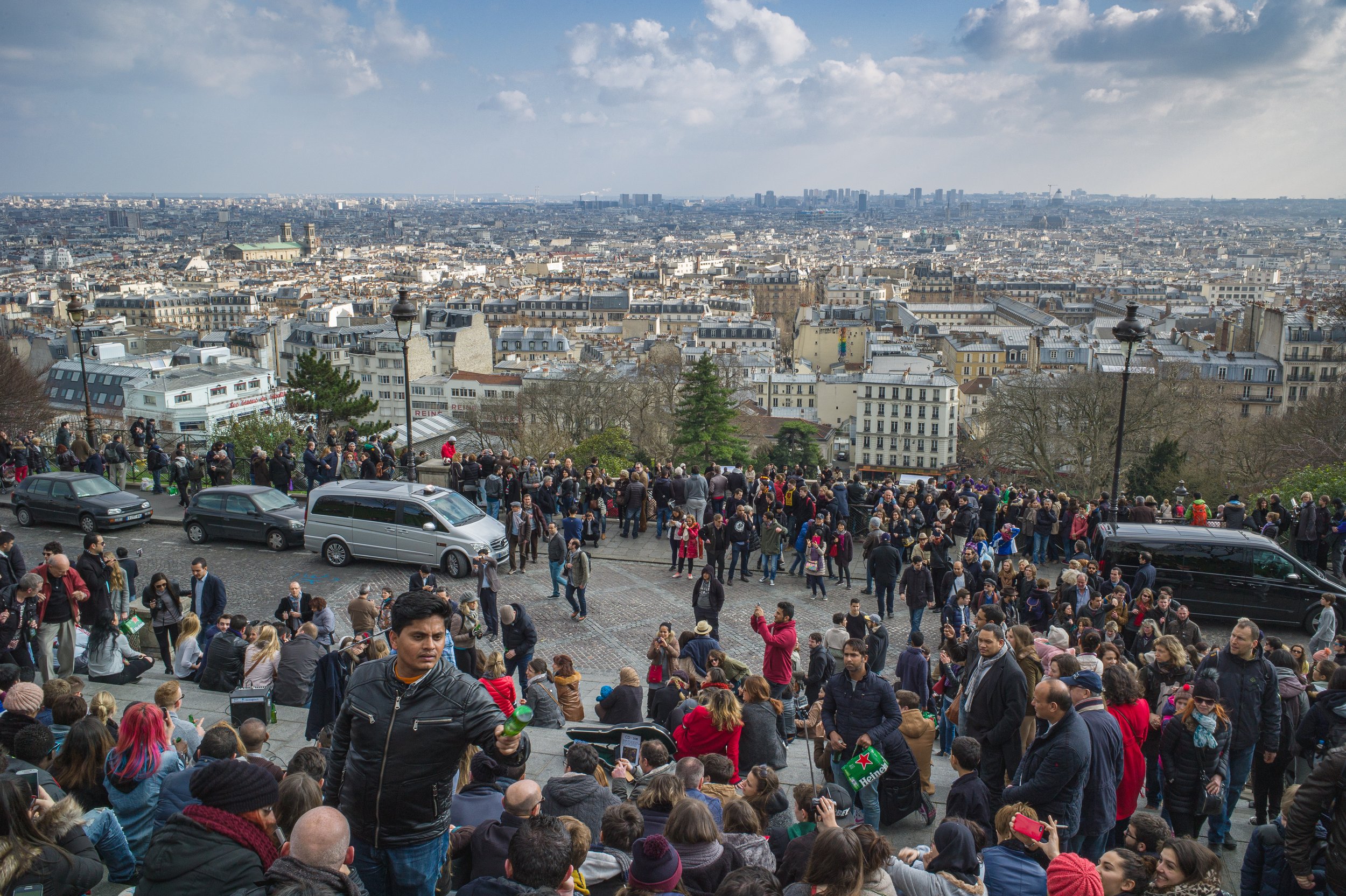
 In recent years, civil unrest and anti-government protests have featured prominently in news reports from France and the 'gilets jaunes' were in the process of setting up a small demonstration when I arrived, closely observed from a discrete distance by the police.
In recent years, civil unrest and anti-government protests have featured prominently in news reports from France and the 'gilets jaunes' were in the process of setting up a small demonstration when I arrived, closely observed from a discrete distance by the police.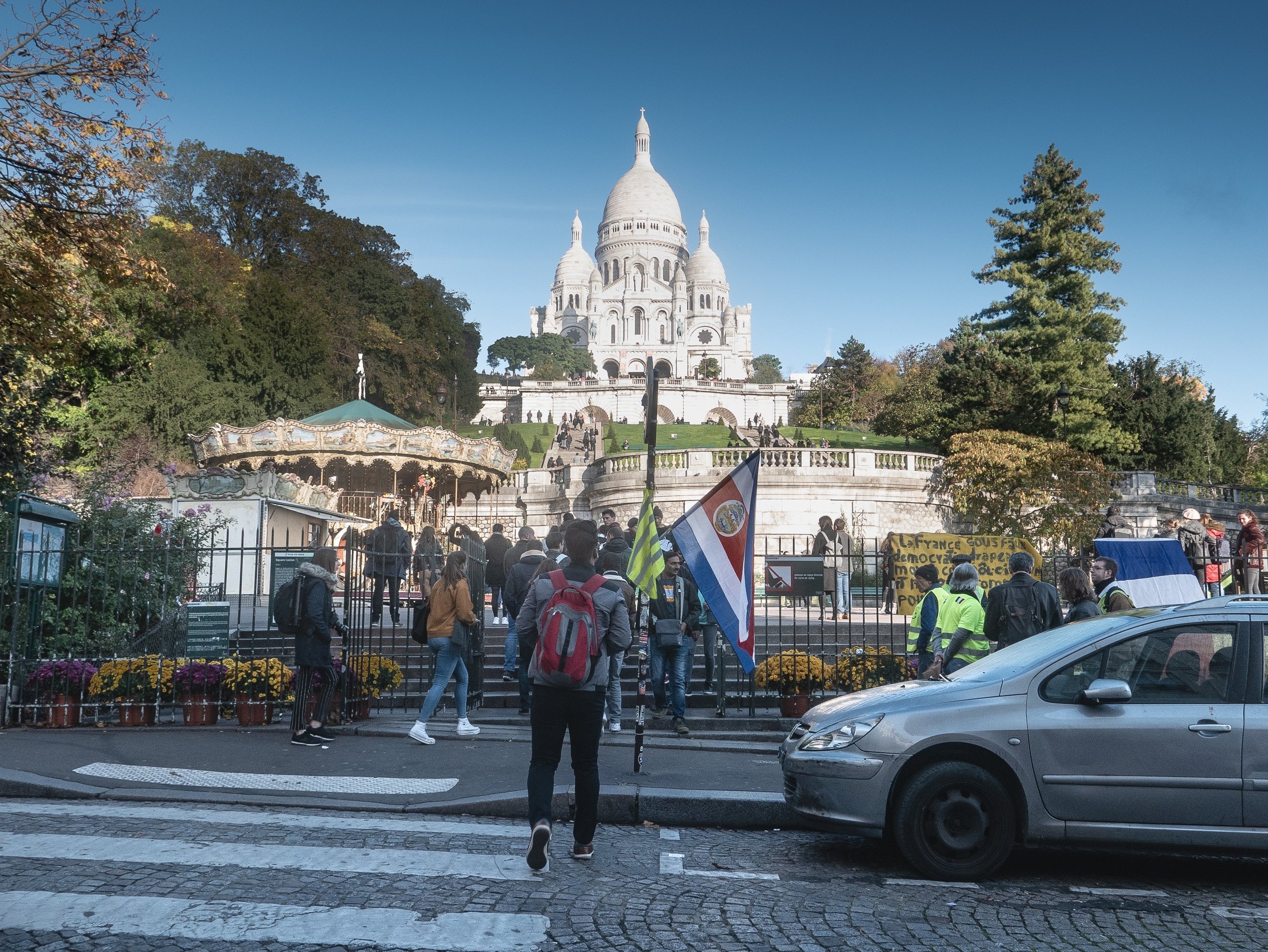
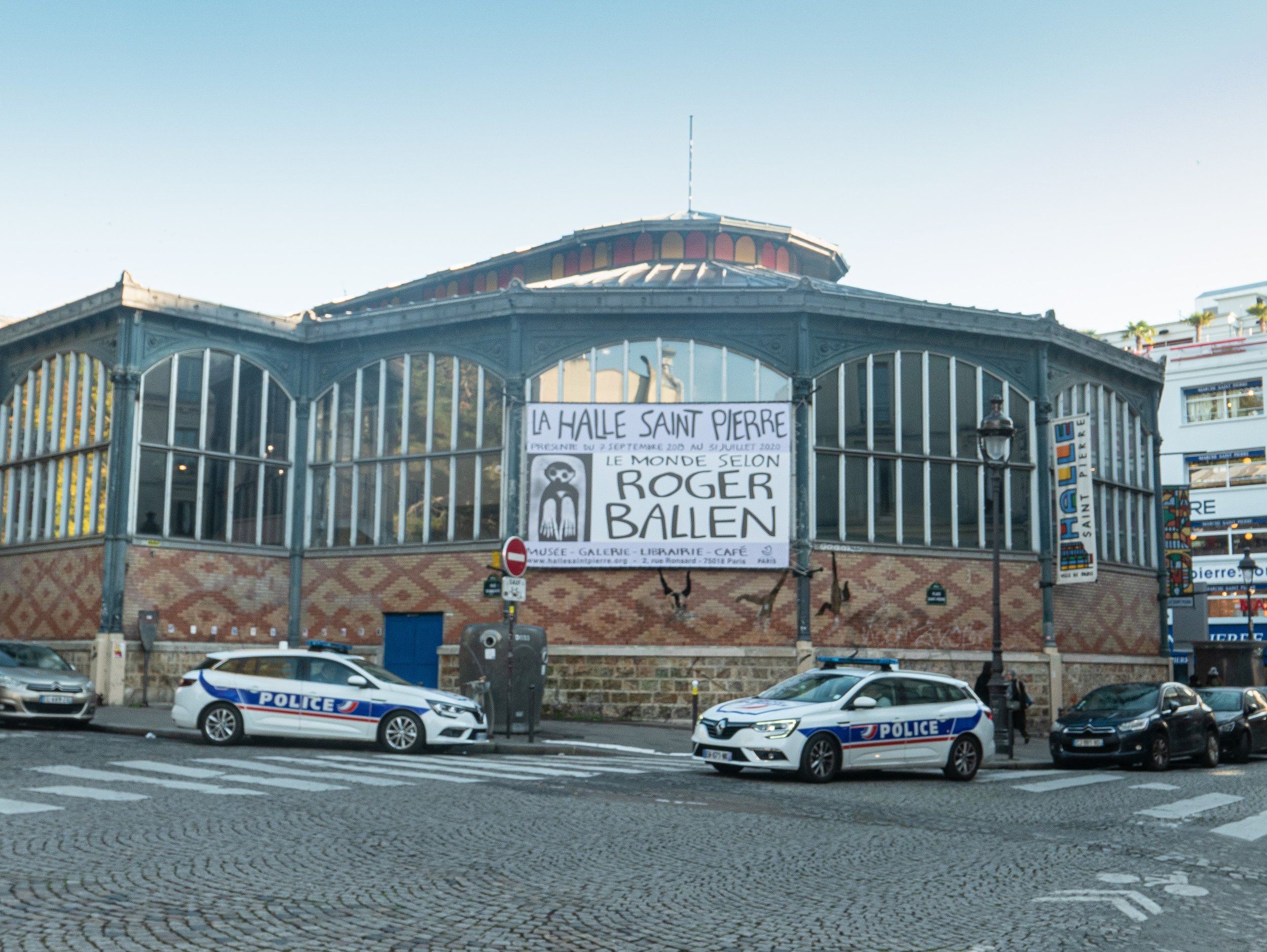 That was when by pure chance, I arrived at the Halle Saint Pierre with a sign for an exhibition of photographs and artworks by Roger Ballen and I knew then what I was going to be doing for the rest of the morning.http://www.sacre-coeur-montmartre.com/english/
That was when by pure chance, I arrived at the Halle Saint Pierre with a sign for an exhibition of photographs and artworks by Roger Ballen and I knew then what I was going to be doing for the rest of the morning.http://www.sacre-coeur-montmartre.com/english/
Paris Photo 2019
Spending a day at Paris Photo can be quite exhausting, due to the vast volume and wide range of photography on show but is one of the most stimulating ways of seeing at close hand, examples of a large selection of contemporary photography as well as original vintage prints by many of the finest photographers of the twentieth (and nineteenth) century. In practice, like Photo London, Paris Photo is essentially a four day long international dealers fair, showcasing largely fine art photography, with in addition a series of talks or interviews with several exhibiting photographers, a book fair and program of films, all under one (very large) roof.The large number of photographers represented makes it difficult to cover them comprehensively and unfair to single any one individual out. Selection of photos shown below represent a tiny fraction of what was available, concentrating on the more abstract or non-representational images, which I find myself increasingly drawn towards. They do not photograph well in the mixed lighting with lots of reflections and these are more of an aide memoire for myself and a record of the sorts of gallery layout that seemed effective, even in these relatively confined spaces. The selection includes a few original vintage prints by some of my personal favourites and several images by photographers that I have not previously encountered.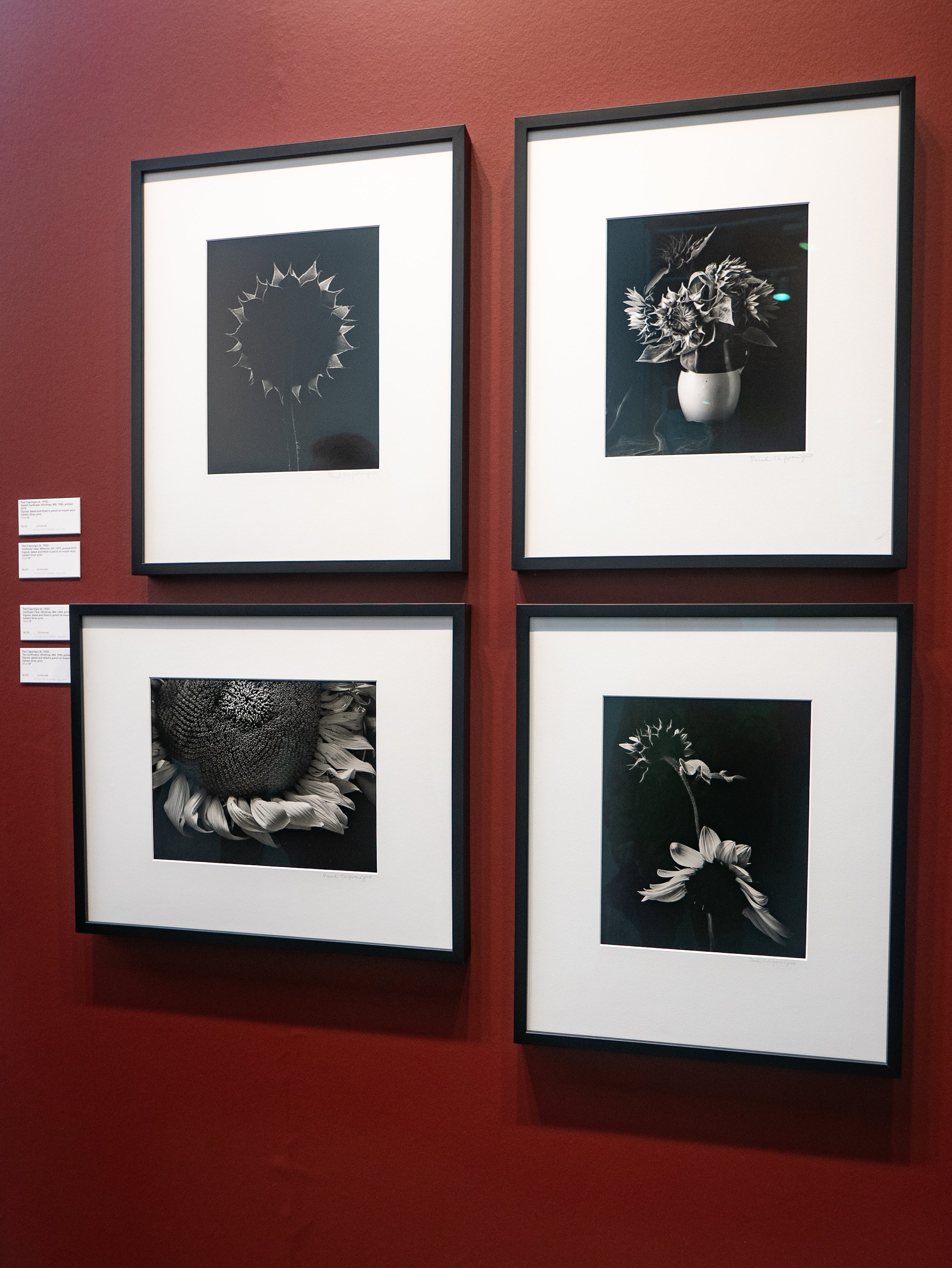
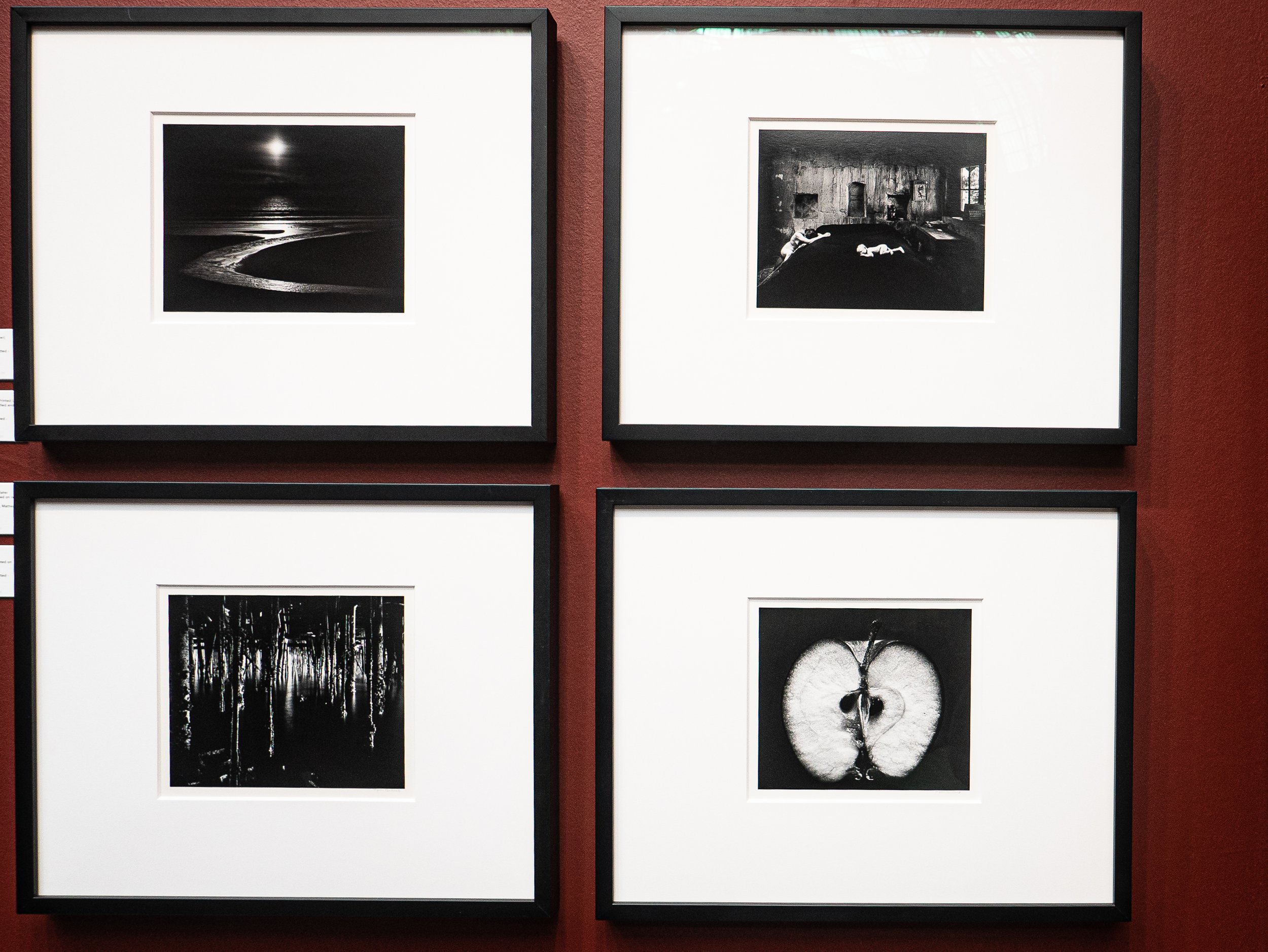
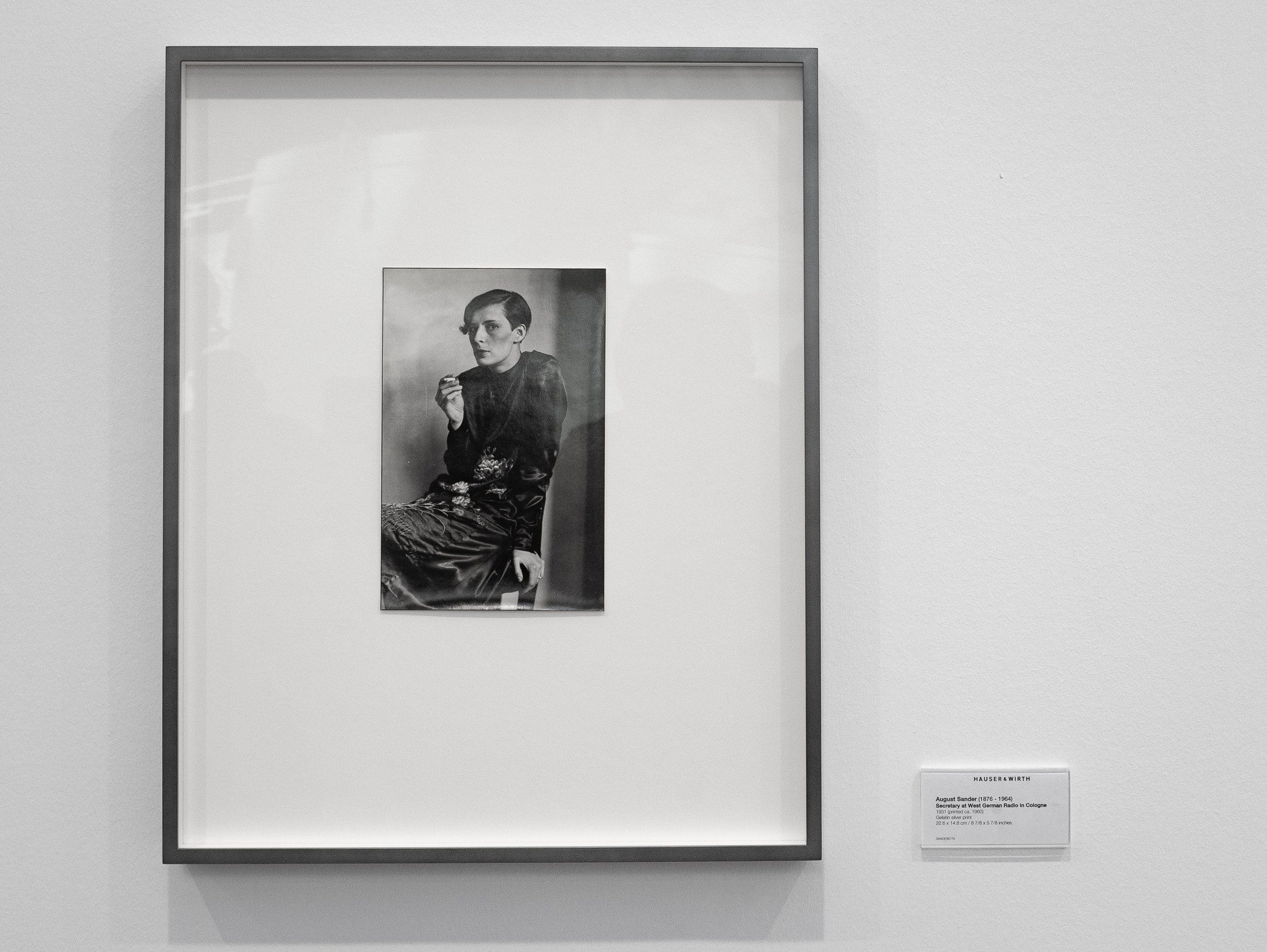
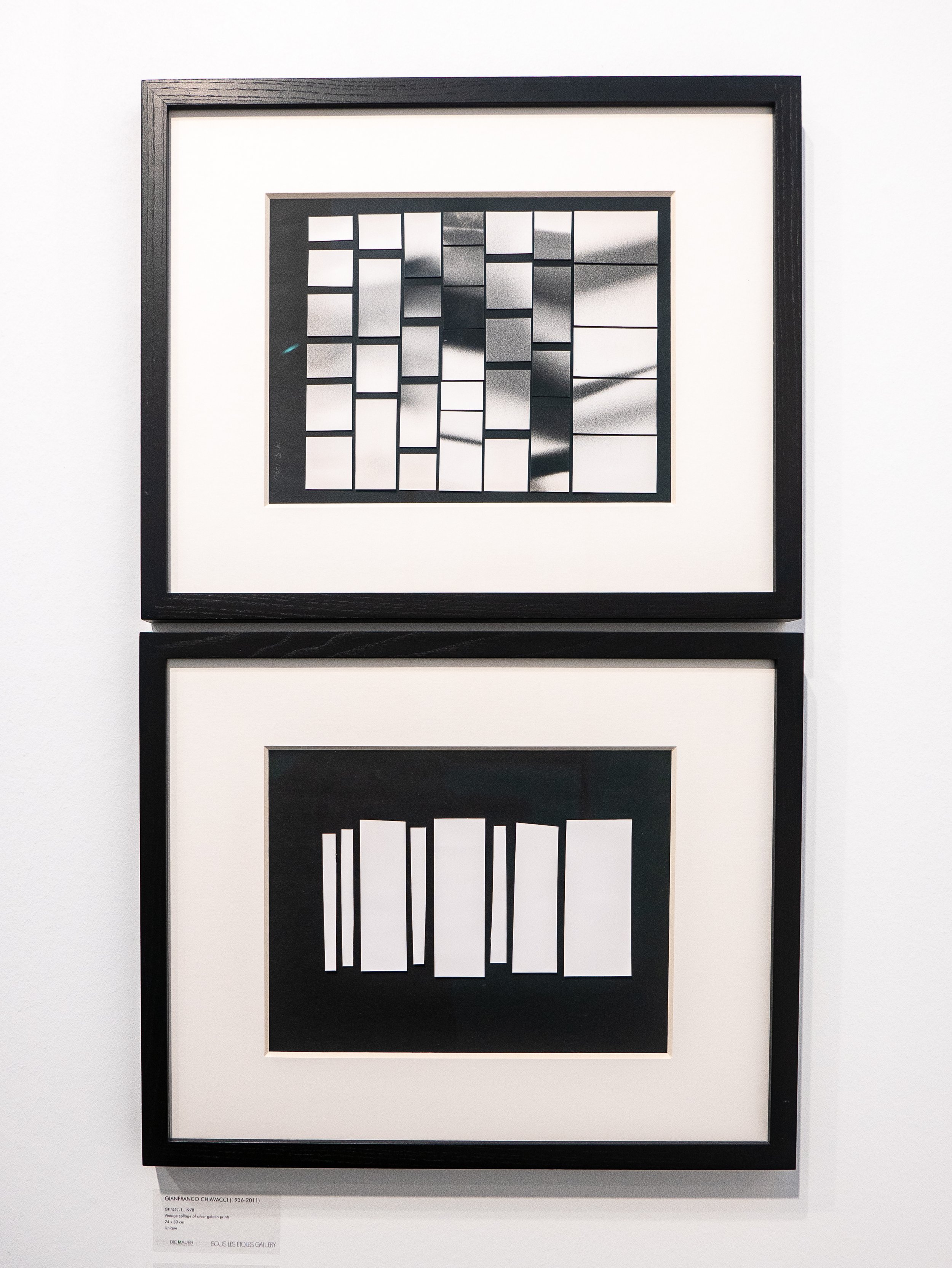
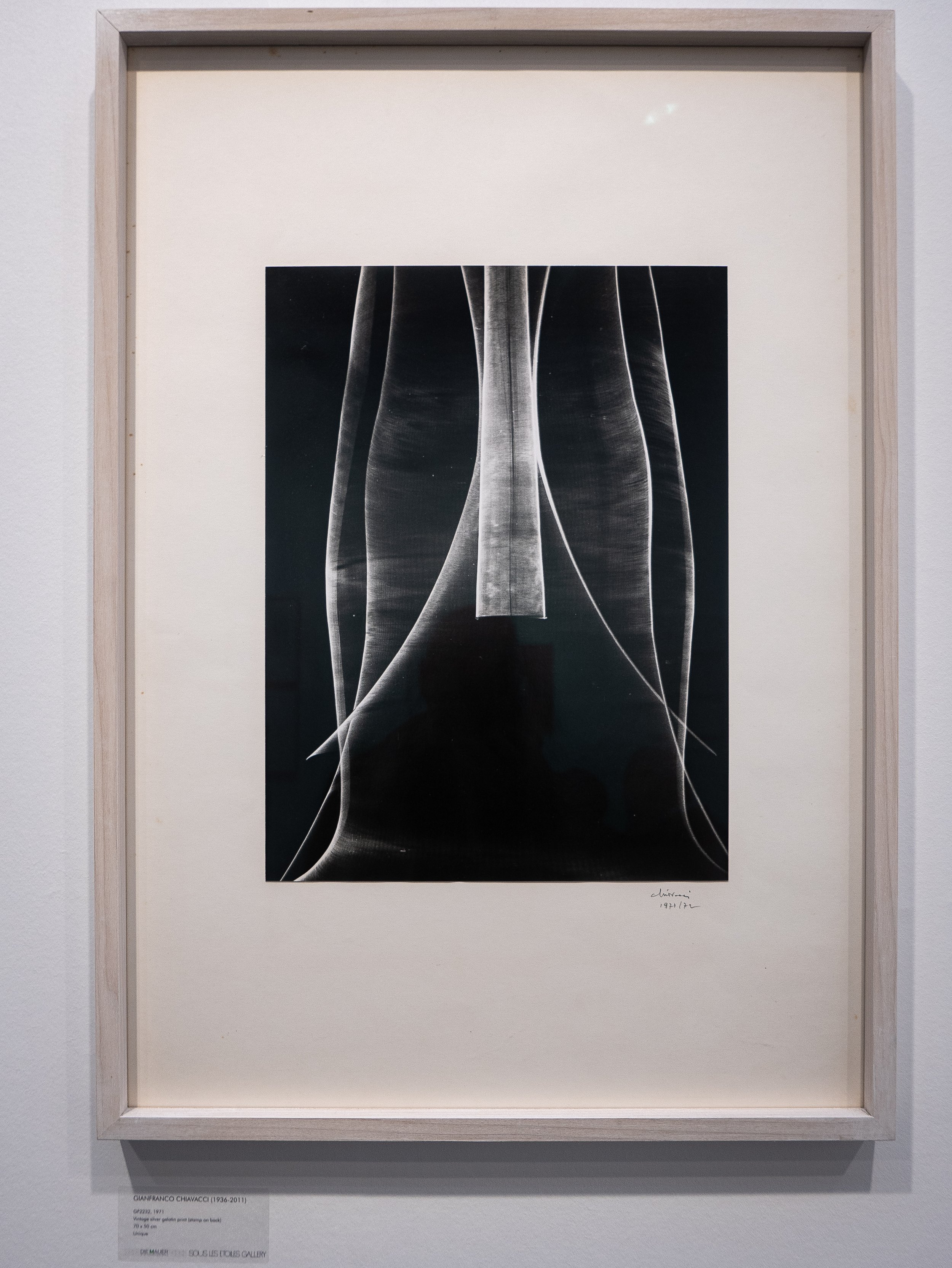
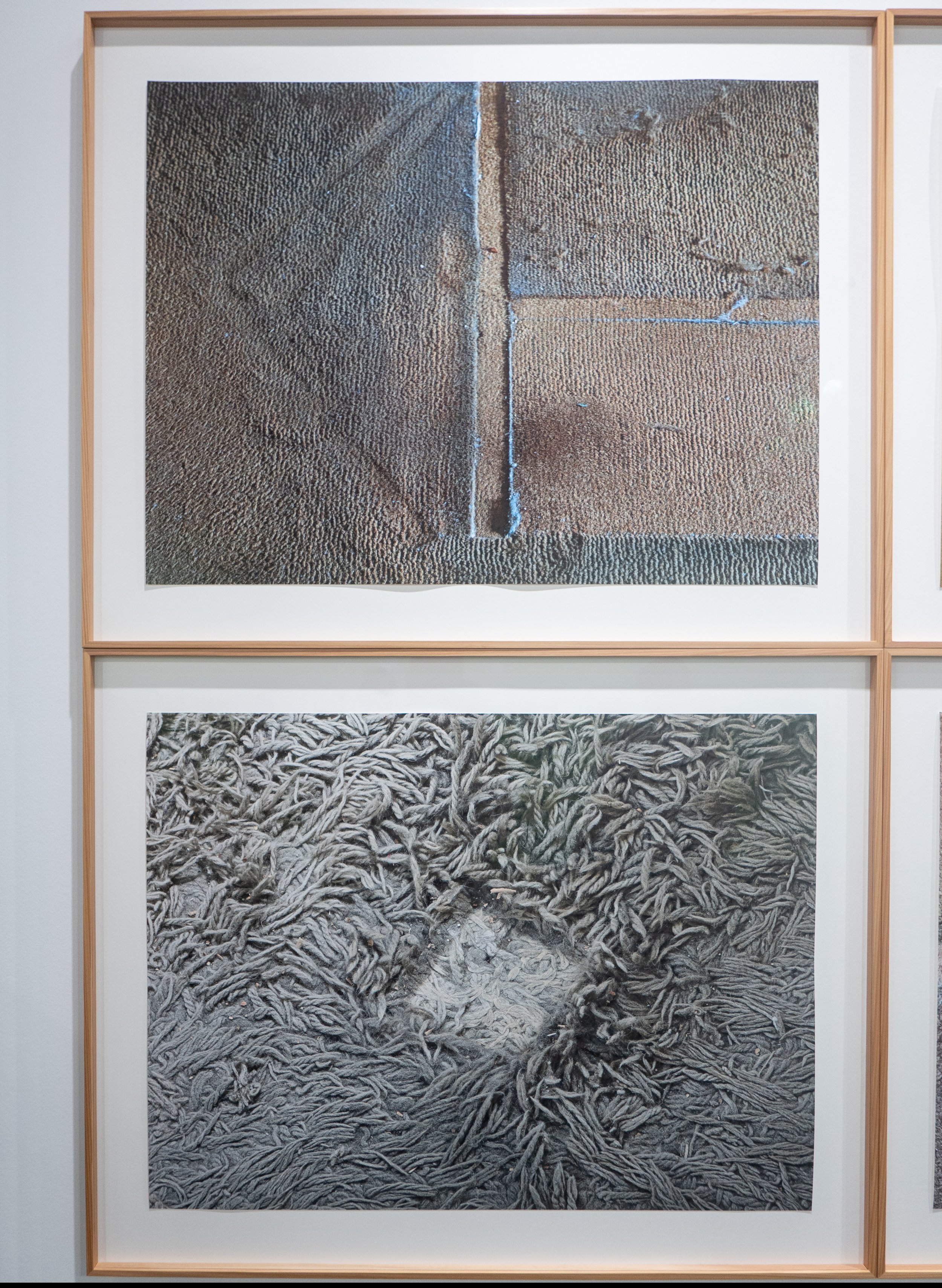
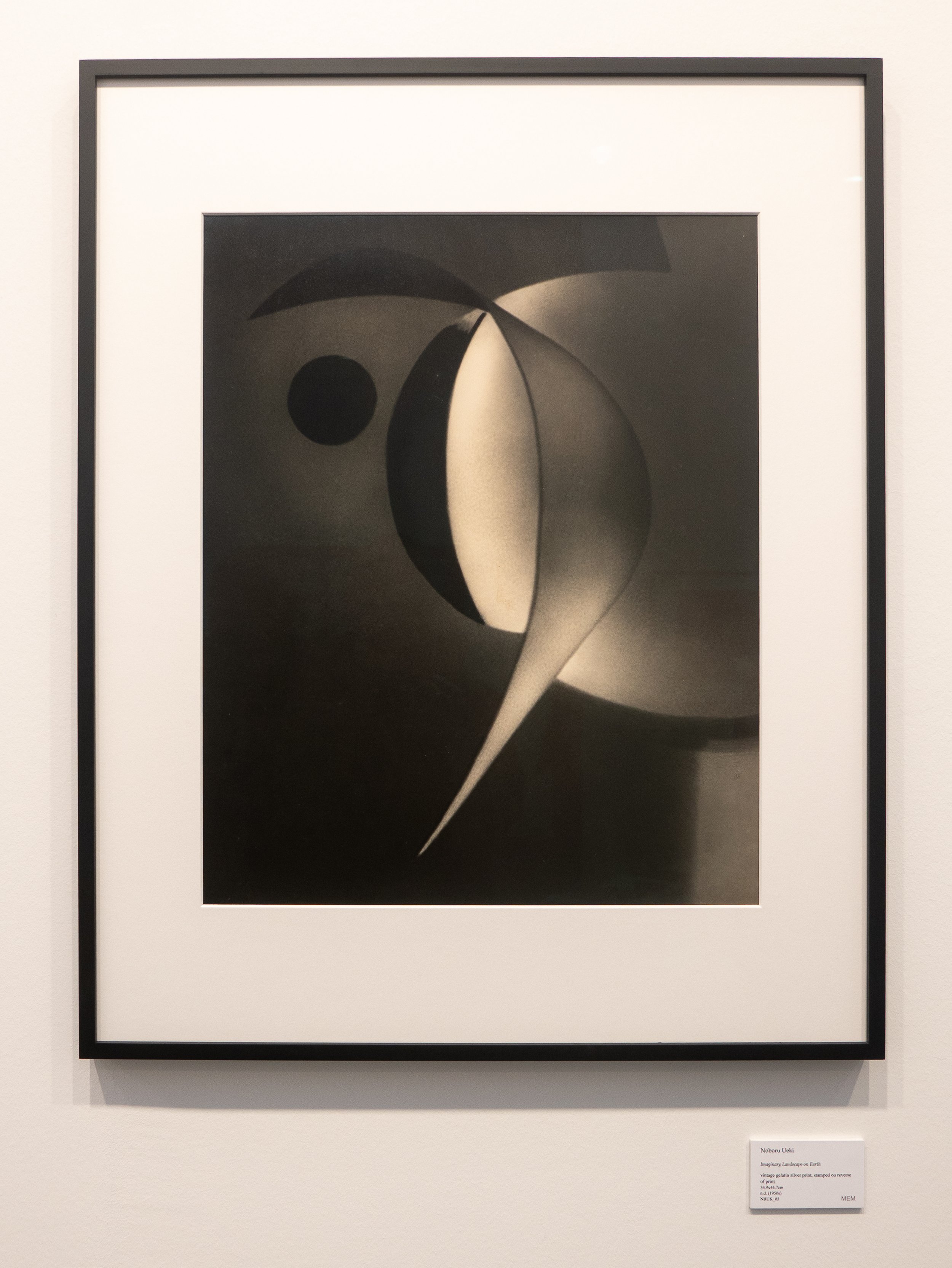
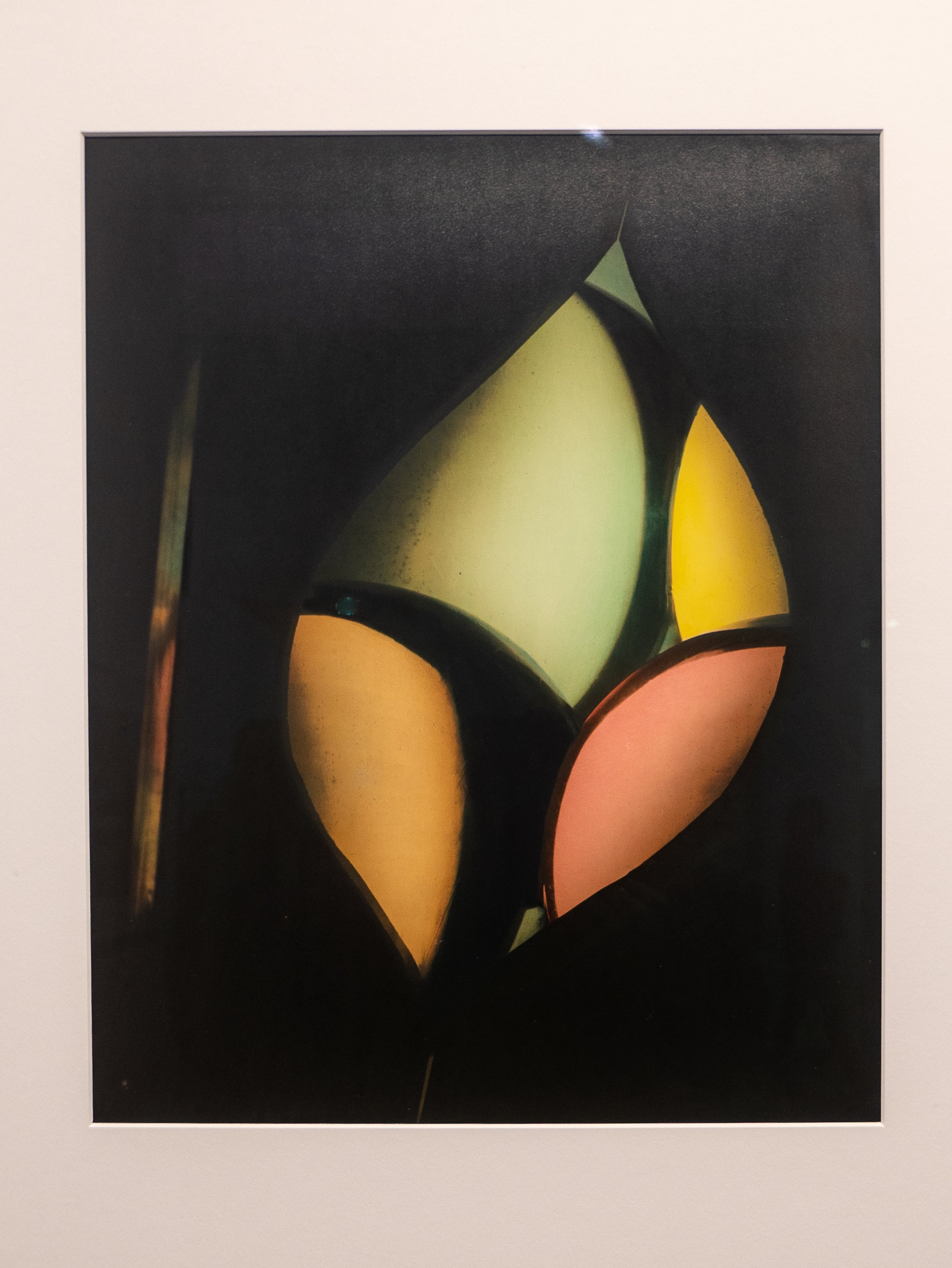
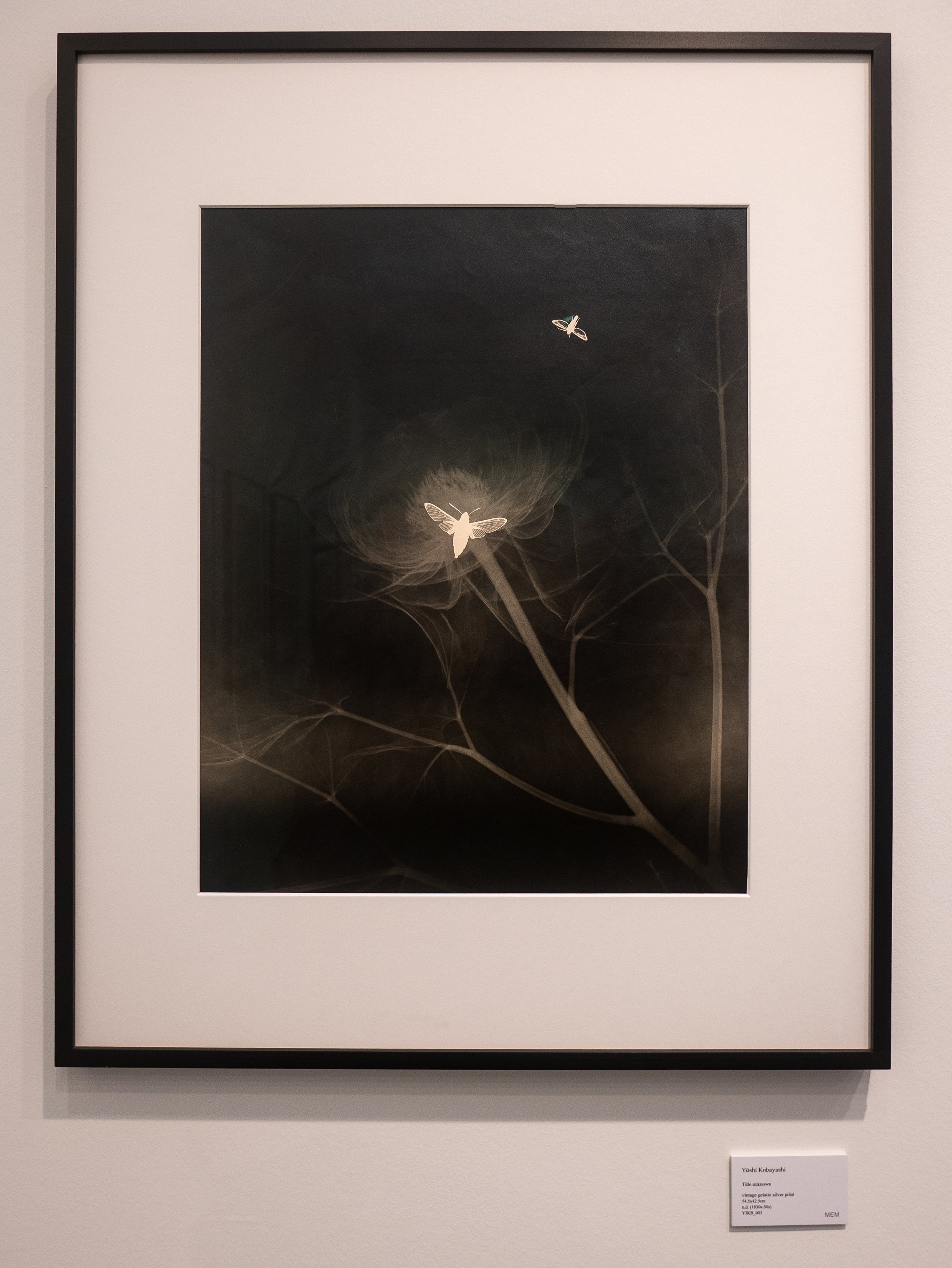
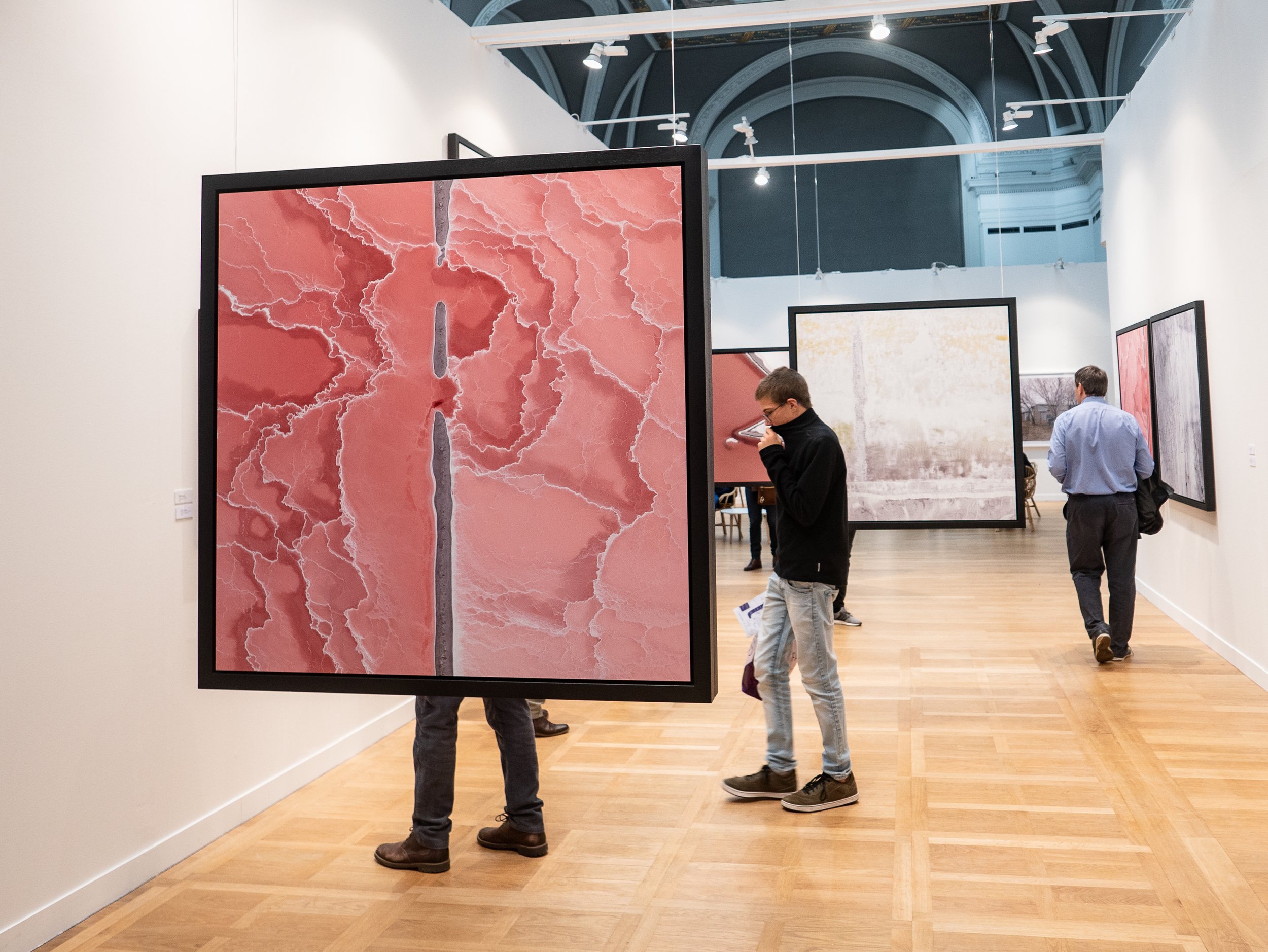
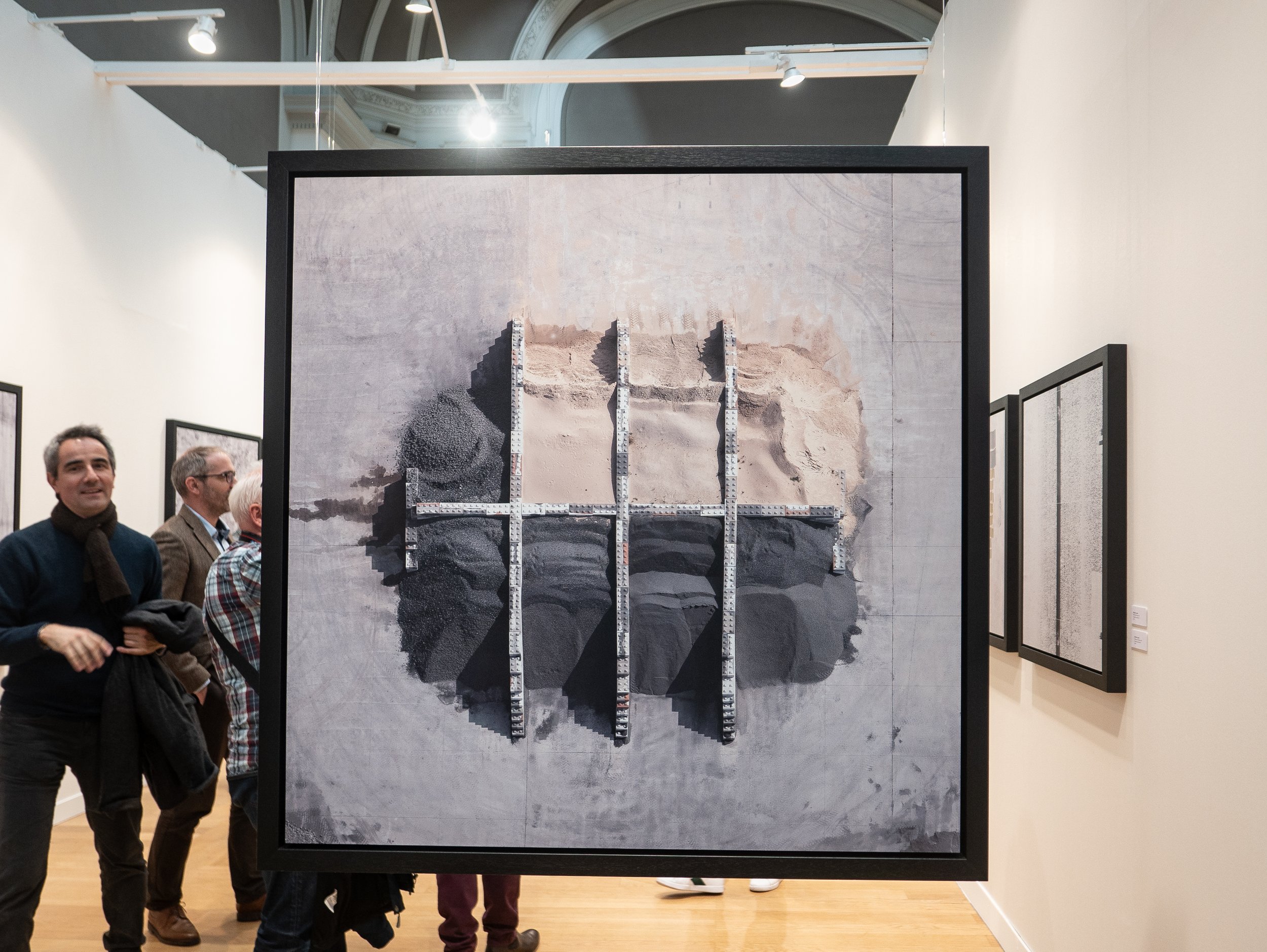 It was probably a mistake to try to see all of this in one day and the network of gallery stalls with a seething crowd of people actually makes it quite difficult to know if you have seen everything anyway. I spent seven hours going round the exhibits and tried to attend two of the Artist's Talks (one was in French a long way above my school days level), without stopping for a break as the queues for refreshment or food were enormous and I think I pretty much got there.
It was probably a mistake to try to see all of this in one day and the network of gallery stalls with a seething crowd of people actually makes it quite difficult to know if you have seen everything anyway. I spent seven hours going round the exhibits and tried to attend two of the Artist's Talks (one was in French a long way above my school days level), without stopping for a break as the queues for refreshment or food were enormous and I think I pretty much got there.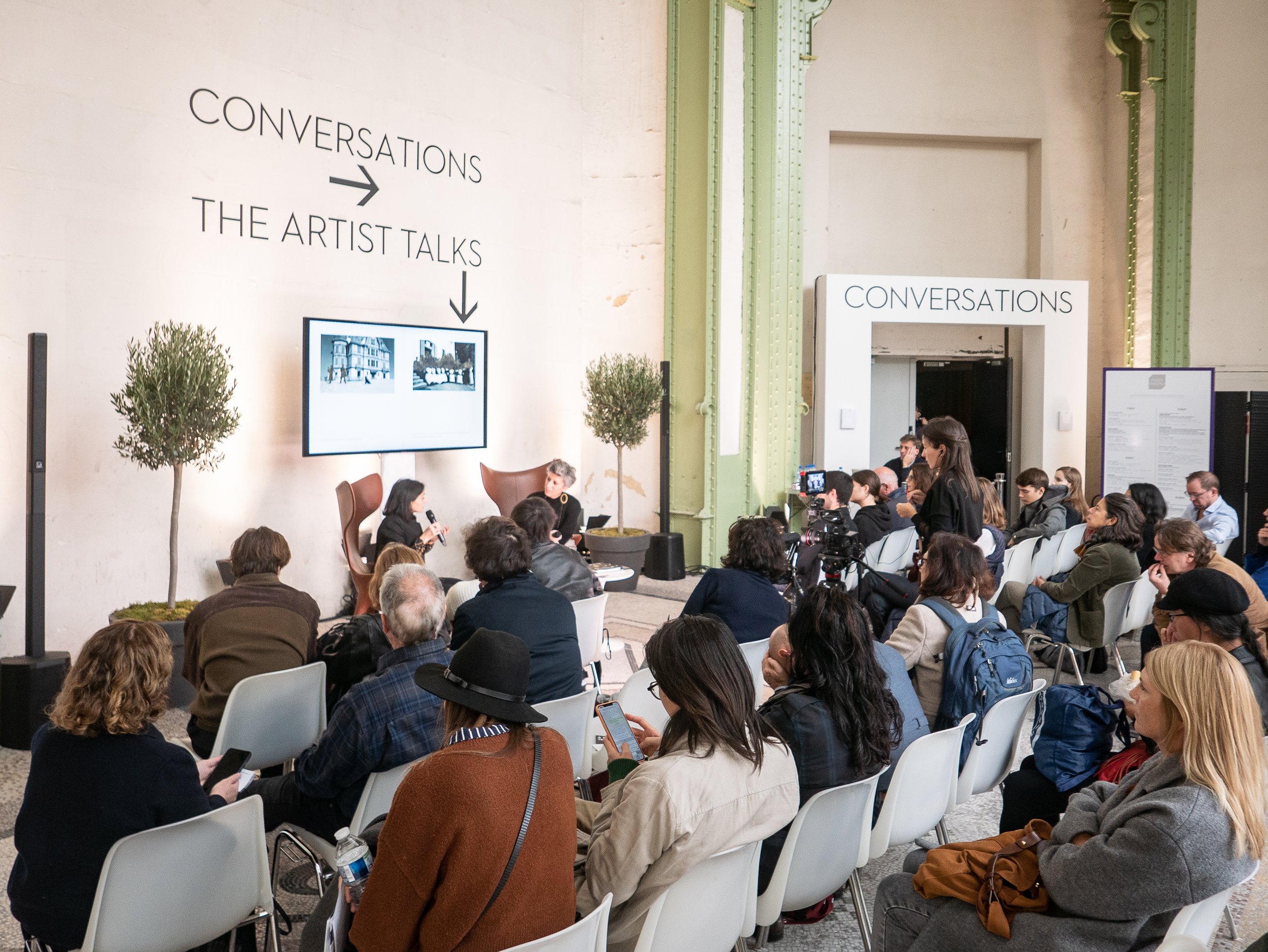 If I did go again I would plan to spend at least two days, plan ahead cherry-picking what I really wanted to see and make sure I get in early for a seat for any of the talks that I didn't want to miss. Although relatively poorly organised, the Paris Photo website is an excellent ongoing resource with videos of many of the interviews from this and from previous years.https://www.parisphoto.com/en/Home/
If I did go again I would plan to spend at least two days, plan ahead cherry-picking what I really wanted to see and make sure I get in early for a seat for any of the talks that I didn't want to miss. Although relatively poorly organised, the Paris Photo website is an excellent ongoing resource with videos of many of the interviews from this and from previous years.https://www.parisphoto.com/en/Home/
'As it is' - a Zed Nelson film with David Hurn at work in the Welsh landscape
On 16th October 2019, Oriel Mostyn in Llandudno presented the first showing of 'As it is', a new short film by Zed Nelson in collaboration with Magnum photographer David Hurn, followed by a talk and question and answer session with Zed Nelson and Alfredo Cramerotti, Director of the gallery. This was combined with the opening of an exhibition of small selection of David Hurn's photographs, about ten each from his earlier monochrome work on street life in Wales and from his current project documenting the ongoing changes in the landscape of Wales. The film documented Hurn in the process of making these more recent images while in conversation with Zed Nelson, in which he described his approach to the project.Hurn is not generally regarded as a landscape photographer and acknowledged that at the age of 85, this could appear to be a change of genre from his better known largely monochrome documentary photography but explained that the aim of this work is to document the landscape 'as it is' currently, with particular emphasis on the effects of human habitation and exploitation rather than its' natural beauty. Each scene in the film was based on the thought processes going into the making of a specific individual photograph, several of which were made locally in North Wales.The conversational approach and clear rapport between the two photographers made the film enjoyable to watch as well as informative. The Q and A session which followed was quite lively and largely positive though one person questioned the use of the title on the basis that the photographs represent David Hurn's (masculine) views on the state of the Welsh landscape as he sees it rather than 'As it is'. Hurn has been quoted as saying he regards the concrete structures in the breakwater shown above as "one of the two best sculptures in Wales". From my own point of view, the most obvious criticism is the fact that the exhibition of such an important photographer's work was located in a small side gallery and consisted of such a disappointingly small number of his photographs.https://www.mostyn.org/event/exhibition-opening-event-film-screening-artist-talkImage copyright: David Hurn/ Magnum Photos. Sourced on 30/10/2019 at: https://www.canon-europe.com/pro/stories/david-hurn-documenting-landscapes/



